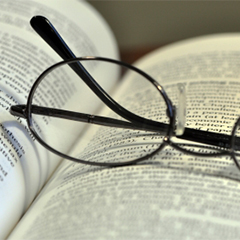OK, let’s face it. Computers have changed the face of design and marketing. A lot of the skills I learned as a young graphic artist aren’t necessary any more. Gone are the days when we had to cast off type to find out what size to have it set. Mapping pens and Graphos pens are things from a by-gone era. As is art board with its delicate china-clay coated surfaces and the judicious scraping of inked lines to achieve beautifully squared corners. No more mathematically scaling transparencies, no more hand-drawn visuals (or very few at any rate) and the heady aroma of Magic Markers. And alas, sadly no more cow gum bungy balls.
The old skills have been replaced by new of course. Hand skills replaced by head-skills. There’s a lot of technical stuff to know, a lot of processes to learn – and the landscape is changing all the time. But there is one skill that is still necessary and cannot, as yet, be replaced by the computer. Proof reading.
Proof reading is a skill that is often overlooked or entrusted to the unqualified. It’s no good hoping that your web builder will do your proof reading for you. As a rule of thumb, it is far more effective to ask someone who has never seen the work before to proof read than to ask the person to whom the work has become familiar, and mundane. Add to that the fact that most web designers, with brains highly attuned to coding, are virtual dyslexics when it comes to spelling. I should know.
Neither should you rely on your trusty computer to help you out. Here’s a poem to demonstrate why…
Eye halve a spelling chequer
It came with my pea sea
It plainly marques four my revue
Miss steaks eye kin knot sea.
Eye strike a key and type a word
And weight four it two say
Weather eye am wrong oar write
It shows me strait a weigh.
As soon as a mist ache is maid
It nose bee fore two long
And eye can put the error rite
Its rare lea ever wrong.
Eye have run this poem threw it
I am shore your pleased two no
Its letter perfect awl the weigh
My chequer tolled me sew.
It’s an old ditty but it demonstrates the point very well. There’s nothing more unprofessional than allowing grammatical and typographical errors into your finished article. They can be expensive – especially if it’s vital information, such as a telephone number, or a price-point.
Here are five top tips for effective proofreading:
- Put some distance between you and the text. It’s hard to proofread a document that you’ve just finished writing — it’s still too familiar. Put it aside for an hour and do something else. Once your head is clear you can take a fresh look at the article and see what is really there, rather than what you expect to be there. Better still, get a colleague to read it. Someone who is reading an article for the first time, comes to it with completely fresh eyes.
- Don’t read on screen. A print out is one way to detach yourself from the familiar image you’ve been looking at for hours. I’ve lost count of the number of times I’ve printed a page out and immediately spotted a typo. You can make notes directly on the proof – it helps the web designer enormously to see exactly where the errors are rather than to have them described in an email or over the phone.
- Make some space for the task. Effective proofreading can’t be done in the margins of a busy working day. Find a place where you can concentrate and avoid distractions. And don’t take phonecalls.
- If the document is a long one do your editing and proofreading in chunks, rather than all at once your concentration is likely to wane and the task becomes onerous.
- Check the text carefully BEFORE you send it to your web builder. The text you produce is going to be “cut and pasted” into the page. If you’ve left in grammatical and typographic errors they will be replicated. And your web builder is going to charge you to fix it.
Featured image by Michelle Meiklejohn

